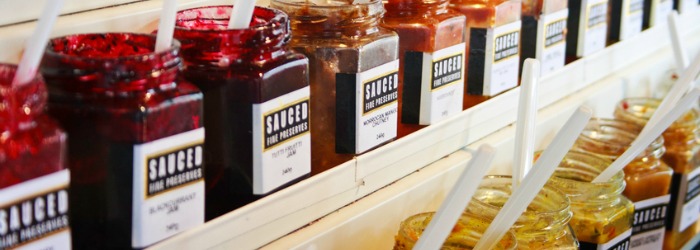How does curation affect our every day life?

Our everyday lives seemed to be filled with more options than ever, and whilst on the outside this may been seen as a fantastic thing, do options actually inhibit us from choice? Michael Bhaskar, author of Curation: The power of selection in a world of excess shares his thoughts on how curating our everyday, from food shopping, to our job, can help with the problems of choice we may face.
We tend to think that choice is a good thing. Our companies and governments have, for well over a century, put expanding choice as a primary goal, an unalloyed good to be pursued at all costs. Choice is what makes us happy and what defines an economy in good working order.
Only, it turns out this isn’t true.
In a famous experiment, the psychologist Sheena Iyengar tested the assumption that more choice is positive. She trialled a large selection of jams and a small selection of jams in a California supermarket. It turned out that customers bought more jam when there was less choice. A large selection, lots of choice, was putting people off buying anything. Iyengar and others have repeated the trial countless times with many scenarios and always found the same result.
Why?
When faced with large amounts of choice we worry about making the wrong choice. We experience what psychologists call loss aversion; we don’t want to make a choice as if we get it wrong, we will experience that as a loss compared to what we could have. Instead, smaller sets of choice mean we have less chance of getting it wrong so to speak, and are therefore more likely to make the choice.
What we need, in other words, is curated selections. The word curation has sprung from the arcane world of museums and art galleries, first on to the Internet and then out into the world generally. Twenty years ago no one would have talked about winnowing a retail selection as curation; but now they do. The English language moves on and so should we. As this example shows, curation isn’t just an add one to the economy we have created. It’s becoming an integral part of it.
By curating, what I mean is when we have acts of selection and arrangement that add value. When we read about curating this or that in the media, this, I think, is what they really mean. It’s this sense of curation that is making itself felt – on the Internet and in the gallery, in our shops, our homes, our culture and our media.
Take data for example. We have far too much of it. Data is growing at around 60% a year, an astonishing productivity. All of this translates into information overload. The neuroscientist Daniel Levitin estimates that we are bombarded with information equivalent to 175 newspapers every day. Professionals who rely on information, like City traders, are faced with a blizzard of data that continues much more noise than signal. Unpicking this, finding what matters, seeing the big patterns is today much more valuable than simply creating more. On Spotify we are faced with 30 million songs – 20% of which have never been listened to by anyone on the service. Only teams of skilled playlist creators and one world’s most sophisticated pieces of musical technology can make this navigable. Spotify works because it has huge choice – and that choice is curated.
Both these and the choice example are reflected in new businesses and business models. Retailers are learning that it’s their expertise to produced limited and focused selections for their customers is, in an age of limitless online inventory, their main source of value. Technology companies from Google, Amazon and Apple down are investing in both algorithmic and human curation. Given the overload, we need both to help sift the sheer mass of content being piled on every day.
We don’t just feel this on the Internet either. One academic estimates that the average Western European household contains over 10,000 items. Americans own even more. It results in what author James Wallman calls ‘stuffocation’ – the stress and even anxiety that comes from having too much useless crap. This feeling explains the popularity of techniques like the Kondo method, a way of ruthlessly cutting down on our possessions and throwing out everything that doesn’t truly matter to us. It’s curating ones life in all but name.
Curation became a buzzword. One it’s all too tempting to dismiss. But when we look under the surface it’s an incredibly powerful and flexible idea that responds to the problems of today; the problems of too much. Whether it’s in our homes or our decisions, or in the great macro spaces of the Internet and the world economy, the principles behind selecting and arranging have never more important.


